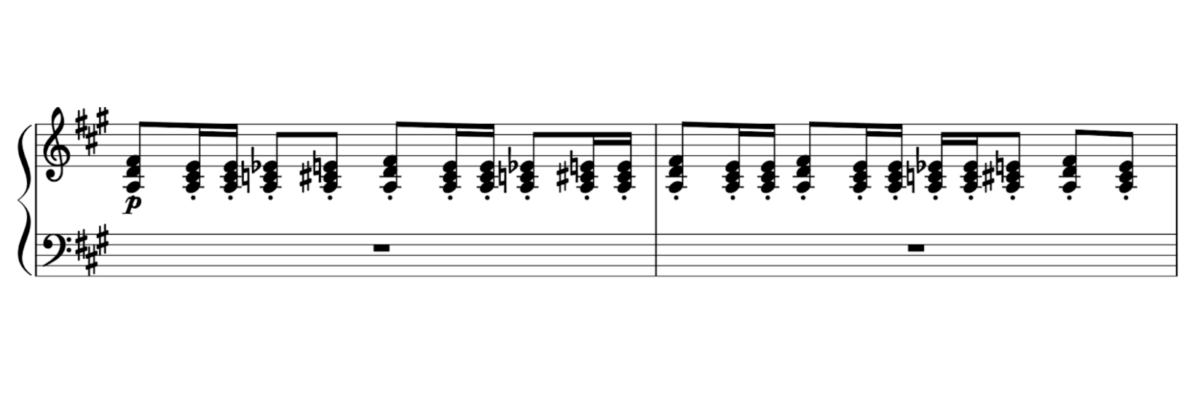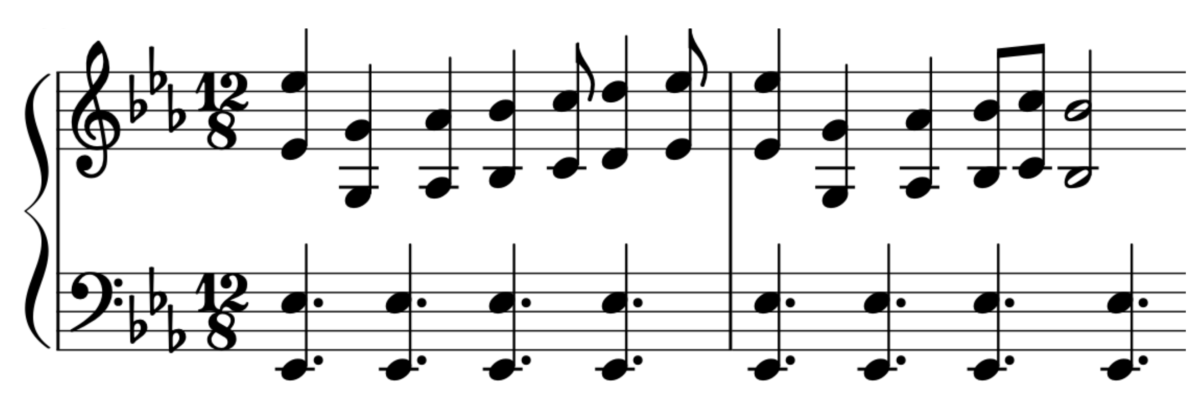Learn How to Play Bohemian Rhapsody on Piano

Is this the real life? You bet it is! Keep reading to learn how to play Bohemian Rhapsody on piano.
Some songs get their 15 minutes of fame—others, 15 years.
Then there are songs like Bohemian Rhapsody. This 1970’s mini rock-opera has left such a strong mark on the music industry, that it’s safe to say that the fame may last 15 decades.
When Queen released the Rhapsody, it met criticism, awe, and mostly just a total state of shock. Nobody knew how to digest this musical revolution, which broke all the rules and standards of pop/rock music at the time.
Today it is a classic that reaches all corners of the world.
Bohemian Rhapsody is six minutes long, with a million different sections and no chorus, making it difficult to learn.
We can’t cover everything in this short article, but we break down some of the main themes of Bohemian Rhapsody and teach you how to play them on piano.
Mama! – The ballad.
The song opens with a dramatic vocal section as the Queen boys sing the eternal question: “Is this the real life?”.

Then, the first main piano theme begins with the lyrics “Mama, just killed a man.”
The broken chord
As you can see, this part of the rhapsody is in the key of Bb. The piano theme is a broken chord – when the notes of a chord play one after the other instead of simultaneously.
To practice playing the Bb broken chord, do the following:
- Play a Bb chord in the second inversion – with the notes in the following order: F, Bb, D.
- Once you’re familiar with this position, play it like a broken chord in a 4/4 time signature, ascending and descending – F, Bb, D, Bb, F, and so on.
- If this feels comfortable, look at the notes written on the upper staff – you will see that they are a variation of a Bb broken chord. They add the note G and use a slightly different pattern in the second half of the bar. Try playing it as written.
Cross-handed playing
As you can see in the bottom staff, the left hand first plays a deep Bb bass note. Then, it jumps up super high to play the notes G and F of the melody line. How does it make this crazy leap? By crossing the left hand over the right hand.
To practice this, start by playing a single Bb chord in your right hand. In the left hand, practice the motion of playing a low Bb octave and then crossing the left hand over the right to a high G and F.
Once this feels comfortable, practice playing the part as written. That is the whole Bb broken chord melody in the right and left-hand parts playing across. You’ll notice that the left and right hands play those two notes (G and F) in unison, one octave apart from each other.
Galileo! – The opera.
Following the wildly emotional rock guitar solo, there is a rather sudden switch into totally different energy — an opera!. The shift comes from the piano part, which plays a staccato and chromatic chord pattern, creating an energetic and theatrical feeling.
Shall we try to learn it?

Chromatic chord movement
When something is chromatic, it means that it contains movement between notes which are directly next to each other and don’t necessarily belong to the same key or scale. It gives a sort of dissonant and crunchy sound.
Let’s look at the chords used in this theme:
- D major, in second inversion: A, D, F#.
- A major in first inversion: A, C#, E.
- A diminished in first inversion: A, C, Eb
To start, practice playing these chords individually. If that is feeling good, let’s play them in the main pattern of the theme: 1,2,3,2,1,2,3,2, and so on.
If they do, let’s look at the movement of the notes within the chords.
The top notes of the chords create the pattern: F#, E, Eb, E, F#, E, Eb, E.
The middle notes of the chords create the pattern: D, C#, C, C#, D, C#, C, C#
The bottom notes of the chords remain on A the whole time, which creates some stability in the sound.
As you can see, there is a lot of chromatic movement within these chords, which gives this theme its edgy and frantic feel.
Staccato rhythm
The word staccato means ‘detached.’ When a rhythm is staccato, the notes are sharp, short, and disconnected from each other, which creates manic and bouncy energy. It’s symbolized by a small dot underneath or on top of the head of the note.
All of the chords in this theme are staccato. The rhythm has two lengths of notes: eighth and sixteenth notes. To learn this rhythm, we need to sing it first.
Let’s sing it by saying “ta” on the eighth and “ti ki” on the sixteenth notes. The pattern will sound like this:
Ta-tiki-ta-ta, ta-tiki-ta-tiki, ta-tiki-ta-tiki, tiki-ta-ta-ta
Practice clapping and singing this rhythm. Once it feels easy and engrained in your body, see if you can play the chromatic chord pattern to this rhythm.
Just gotta get out! – The rock.
Before closing the song with a reprise of the first theme, Bohemian Rhapsody launches into a full-on, head-banging rock session. The driving force of this section is the guitar line, which has a unique polyrhythmic feel. Want to play it on piano?

A three over four polyrhythm
The essence of this rockin’ guitar line is a ‘3 over 4’ polyrhythm. This means that the rhythm has a pulse of three and four simultaneously.
As you can see, the time signature of this section is 12/8. This means that there are twelve eighth notes per bar. Twelve is the magical polyrhythmic number because it’s divisible by both three and four.
Look at the upper staff. The right-hand part mostly has quarter notes. This makes it easy to count in groups of three because there are six quarter notes in a 12/8 bar.
Look at the lower staff. The left-hand part has dotted quarter notes. Each one represents three eighth notes, so a bar of 12/8 has four dotted quarter notes. This is the four-pulse.
Try tapping on a table.
In your left hand, tap the four-pulse written in the bottom staff. In the right hand, tap the quarter notes which make up the melody line and create the three-pulse. If you’re doing it correctly, you should have a very cool rhythm grooving.
Once the rhythm makes sense in your hands and on the table, try reading the line above and playing it on piano. The left hand holds down the four-pulse with heavy bass octaves while the right hand plays the melody in higher octaves.
Nothing really matters.
We’ve only given you a brief insight into the main themes of Bohemian Rhapsody. This is a long and complicated piece of music, but by diving deeply into each of these themes, you gain tools to help you successfully play the rest of it.
Take your time, learn it one section at a time, and if you’re feeling flustered, remember the words of Freddy Mercury, ”nothing really matters!”
For an extra set of ears to help guide your piano playing, Simply Piano listens to you play and offers expert feedback to improve your technique.









